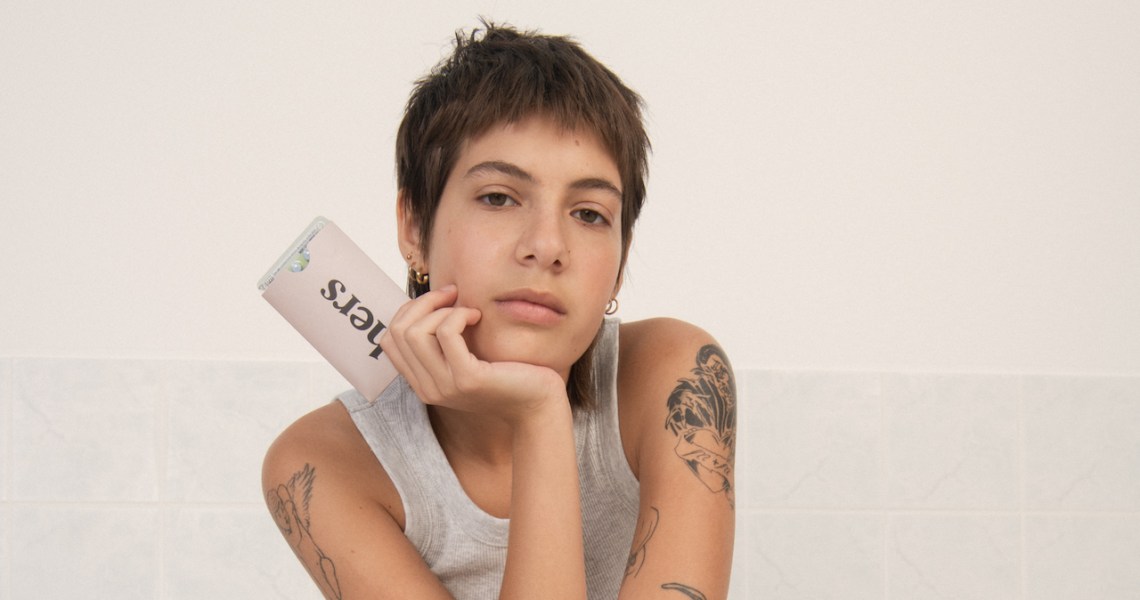When men’s wellness company Hims debuted its sister brand Hers in November 2018, it was an attempt to replicate the quick success its original brand saw in its first year. Last spring, Hims was valued at $200 million; today, the total company’s worth has sky rocketed to $1 billion. Since launching Hers, Hims has secured another $100 million in venture capital, bringing its total funding to $197 million.
Often compared to Gwyneth Paltrow’s Goop for its racy approach to content and imagery, Hims’ big wins have been in the sex and hair categories, which offer generic alternatives to Viagra, Cialis and Rogaine — these categories make up the bulk of its product assortment. Hers is also working to build up these categories, and its sex business seems to be the main focus. In August, the female-focused, direct-to-consumer brand will debut its version of Latisse for eyelashes, as well as four sex products including Amethia, an extended cycle birth control; Xulane, a birth control patch; and its first forays into emergency contraception with EContra EZ and Ella.
Thus far, Hers has managed to avoid the seemingly sexist advertising and marketing restrictions other female-centric sexual wellness and beauty companies have endured from Google, Facebook, Instagram and even New York’s Metropolitan Transit Authority. What’s more, because it started as male-focused with Hims, it has also not had to deal with the funding obstacles that smaller, female-forward sex companies have faced.
Below, Hilary Coles, Hims and Hers co-founder and vp of product, explains why the brand is going after the burgeoning sexual wellness market in a big way.
Why did you decide to place so much focus on your sex business in the brand’s first year?
We have facilitated more than 50,000 doctor-patient interactions on our platform since late last year, and what we think is very special about Hers, and its timing is that our mission has been to support and legitimatize women’s wellness and health. Over the past year in this country, so much accessibility has been threatened, and so there has been this groundswell of interest of women’s self-care, which is why the wellness industry is now a massive, $4.2 trillion market. There is a focus on and need for efficacy, which is why we are seeing a decline in natural products, and customers are fed up with, say, a 10-step skin routine. They instead want something that is going to work on their timeline and with their resources. We are looking at that new way of approaching wellness and care, which is effective and affordable, and very needed in the sexual wellness category.
So far, you’ve only offered three sex-related products — why double your assortment so soon?
Generic Seasonique [Amethia], an extended-cycle birth control pill, has been one of our more requested product by customers since we launched. We think it’s because it allows women to skip periods and be in control, which is often important to women who travel a lot or who have hectic schedules, which is a lot of our consumers. So we thought it was important to launch that quickly. It was a similar circumstance with emergency contraception. In May, we were outspoken about the “heartbeat” abortion bans, and that led us to offering women more flexible solutions. We are now offering an over-the-counter option [Econtra EZ] and a prescription option [Ella]; Ella works for five days instead of the standard 72 hours and has been the second-most requested product by our women.
What about the marketing and messaging piece, which has been tricky for other female-centric companies that have a sex component?
Being DTC-first has given us a direct connection to our customers every single day, allowing us to find out how we are doing. That is what we are focused on. We think representation matters in speaking to her, so we aren’t showing these products in a style that is depressing like a waiting room pamphlet; all the campaign materials are beautiful and direct, like a modern brand should be. We plan to remain provocative to a point and ensure our out-of-home campaigns, whether they’re at a subway station or a cornhole tournament, reflect that.
Ad position: web_incontent_pos1
What about your move into Latisse, which is much more of a beauty play than anything else you’ve dipped your toe in?
We view Latisse as an expansion of our hair-care offering. We’ve shed a lot of light on the fact that 40% of women will experience hair loss before the age of 40, but women are still spending a lot of money and time on hair upkeep at salons and ineffective at-home treatments. Latisse is not as linear as a traditional beauty treatment, and it’s not as focused on a brand name as many of these other heritage companies’ products are.


